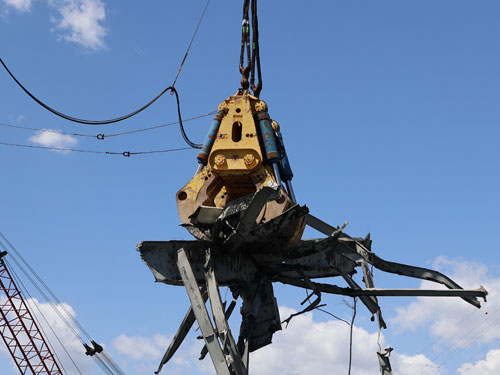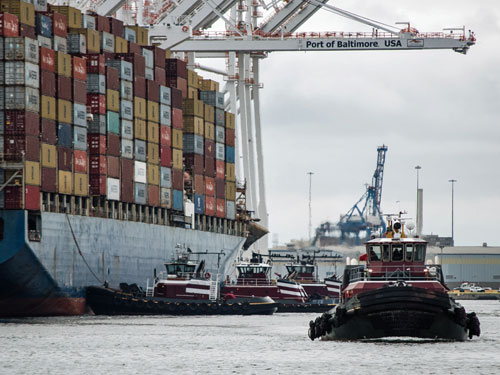
On June 10, 2024, the Fort McHenry Federal Channel was reopened to its original operational dimensions of 700 feet wide and 50 feet deep for commercial maritime transit through the Port of Baltimore.
As part of the Unified Command response to the collapse of the Francis Scott Key Bridge, the U.S. Army Corps of Engineers and U.S. Navy Supervisor of Salvage and Diving approved the restoration of the channel.
Since March 26, the U.S. Army Corps of Engineers and U.S. Navy Supervisor of Salvage and Diving worked to clear Key Bridge wreckage and move the M/V Dali from the Federal Channel.
Following the removal of wreckage at the 50-foot mud-line, the Unified Command performed a survey of the Federal Channel June 10, certifying the riverbed as safe for transit. Surveying and removal of steel at and below the 50-foot mud-line will continue to ensure future dredging operations are not impacted.

The Unified Command safely moved the M/V Dali on May 20 and widened the Limited Access Channel to 400 feet May 21, permitting all pre-collapse, deep-draft commercial vessels to transit through the Port of Baltimore. Now, the fully operational channel enables the flexibility to regain two-way traffic and cancel the additional safety requirements that were implemented because of the reduced channel width.
Fully restoring the Federal Channel to its original width and depth involved the removal of about 50,000 tons of bridge wreckage from the Patapsco River. At its highest point, the Unified Command, consisting of six agencies, led the response efforts among about 56 federal, state, and local agencies, represented by 1,587 individual responders.
Additionally, about 500 specialists from around the world operated a fleet of 18 barges, 22 tugboats, 13 floating cranes, 10 excavators, and four survey boats. Subject matter experts from all over the U.S. also provided essential technical knowledge to the Unified Command.
The wreckage will continue to be transported to Sparrows Point for follow-on processing. Follow-on work in the channel from this point on is part of routine maintenance, ensuring future dredging operations will not be impacted.
Other significant Unified Command milestones:
March 30: Removal of bridge wreckage commences
April 2: The first of three Temporary Alternate Channels opens, allowing shallow-draft vessels to transit through the Port of Baltimore
April 7: The removal of containers from M/V Dali began
April 25: The opening of Limited Access Channel to a width of 300 feet and depth of 35 feet
May 9: Recreational vessels permitted to transit through Key Bridge Response Safety Zone
May 13: Controlled demolition of Section 4, which had pinned the M/V Dali under a 10-million-pound segment of Key Bridge wreckage
May 20: M/V Dali refloated and moved, Federal Channel cleared to a width of 400 feet and depth of 50 feet
June 4: The last major piece of steel truss was removed from Federal Channel
The Unified Command achieved the operational priorities that included ensuring the safety of the public and first responders, accountability of missing persons, protecting the environment, incident stabilization, safely restoring transportation infrastructure and commerce, and supporting the investigation.
The Key Bridge Response 2024 Unified Command included the following:
U.S. Coast Guard
U.S. Army Corps of Engineers
Maryland Department of the Environment
Maryland Transportation Authority
Witt O’Brien’s representing Synergy Marine
Maryland State Police
source: Key Bridge Response 2024 Unified Command
Related Information
Francis Scott Key Bridge Collapse – Ship Collision
Port of Baltimore FSK Bridge Wreckage Removal Efforts
M/V Dali Collision – Francis Scott Key Bridge Collapse NTSB Investigation